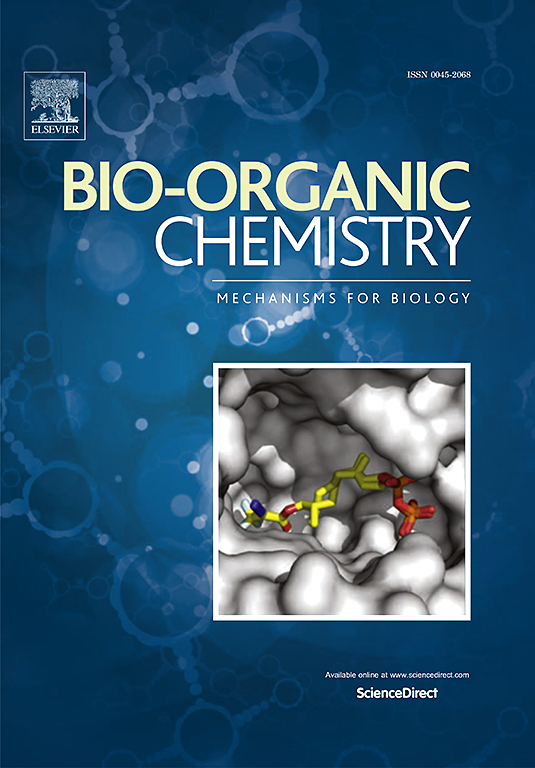Isomeric 2-isobutylmalate derivatives with anti-pulmonary fibrosis effects from the leaves of Bletilla striata via LC-MS/MS-based molecular networking
IF 4.5
2区 医学
Q1 BIOCHEMISTRY & MOLECULAR BIOLOGY
引用次数: 0
Abstract
Based on the LC-MS/MS molecular networking strategy, nine undescribed 2-isobutylmalate derivatives, namely bletistrosides M–U (compounds 1–7, 9, and 11), together with two known analogues (compounds 8 and 10), were isolated and identified from the leaves of Bletilla striata. Their structures with absolute configurations were deduced from spectroscopic data, acidic hydrolysis, and comparison with reported compounds. Compounds 1/2, 3/4, 5/6, and 7/8 represented four pairs of Z/E isomers regarding cinnamoyl groups, and each pair underwent interconversion under UV radiation at 254 nm. Biologically, compounds 1, 2, and 10 exhibited anti-pulmonary fibrosis effects against bleomycin-stimulated cell injury in A549 cells. Further investigations demonstrated that the anti-pulmonary fibrosis potential of 2 was related to the inhibition of apoptosis and epithelial-mesenchymal transition by blocking the Bax/Bcl-2, TGF-β1/Smad2/3, and PI3K/AKT signaling pathways, while concurrently enhancing the Nrf2 signaling pathway.

求助全文
约1分钟内获得全文
求助全文
来源期刊

Bioorganic Chemistry
生物-生化与分子生物学
CiteScore
9.70
自引率
3.90%
发文量
679
审稿时长
31 days
期刊介绍:
Bioorganic Chemistry publishes research that addresses biological questions at the molecular level, using organic chemistry and principles of physical organic chemistry. The scope of the journal covers a range of topics at the organic chemistry-biology interface, including: enzyme catalysis, biotransformation and enzyme inhibition; nucleic acids chemistry; medicinal chemistry; natural product chemistry, natural product synthesis and natural product biosynthesis; antimicrobial agents; lipid and peptide chemistry; biophysical chemistry; biological probes; bio-orthogonal chemistry and biomimetic chemistry.
For manuscripts dealing with synthetic bioactive compounds, the Journal requires that the molecular target of the compounds described must be known, and must be demonstrated experimentally in the manuscript. For studies involving natural products, if the molecular target is unknown, some data beyond simple cell-based toxicity studies to provide insight into the mechanism of action is required. Studies supported by molecular docking are welcome, but must be supported by experimental data. The Journal does not consider manuscripts that are purely theoretical or computational in nature.
The Journal publishes regular articles, short communications and reviews. Reviews are normally invited by Editors or Editorial Board members. Authors of unsolicited reviews should first contact an Editor or Editorial Board member to determine whether the proposed article is within the scope of the Journal.
 求助内容:
求助内容: 应助结果提醒方式:
应助结果提醒方式:


